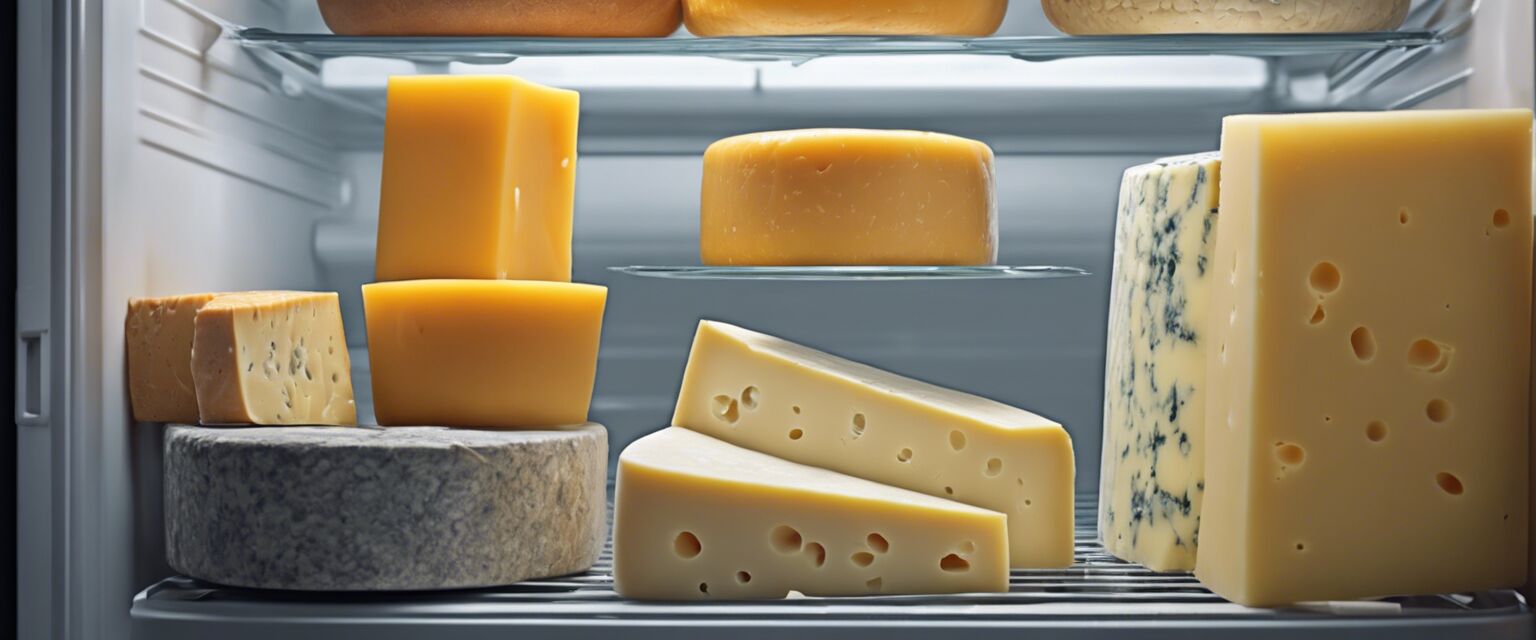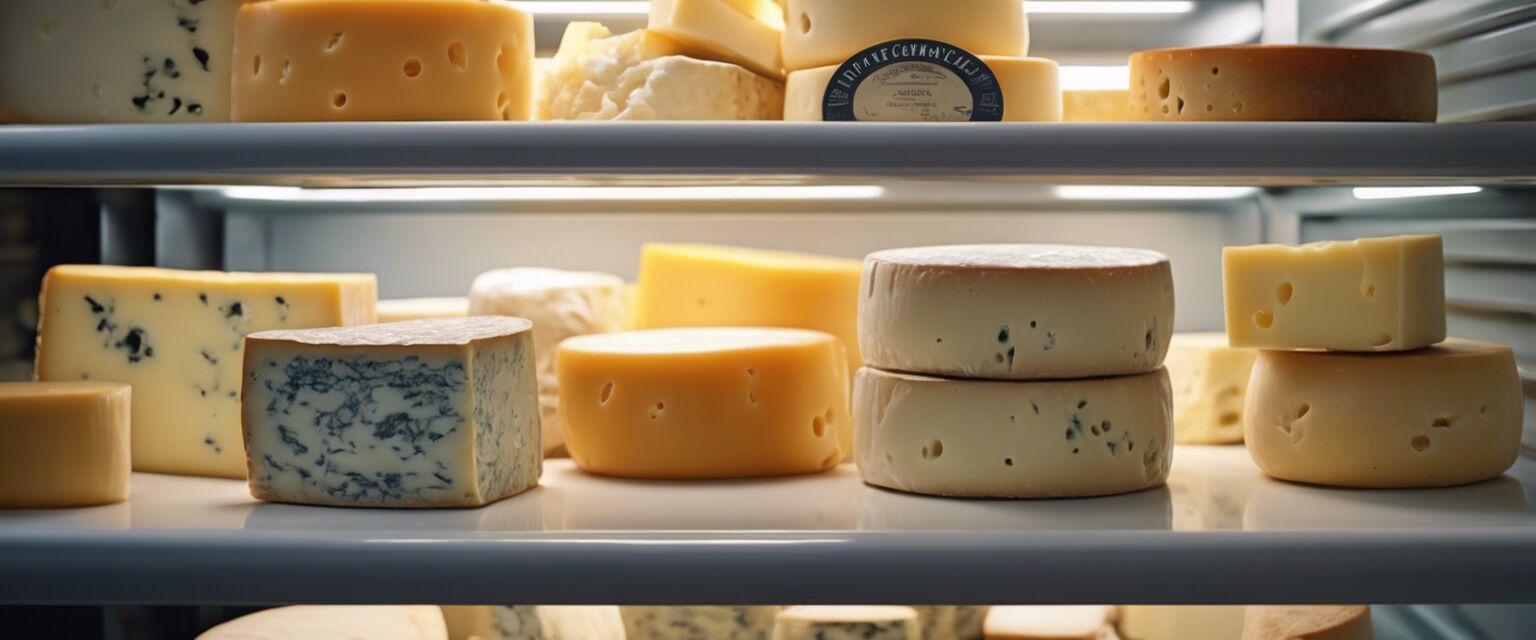
Cheese storage
Key Takeaways
- Different kinds of cheese require different storage methods.
- Humidity and temperature play crucial roles in maintaining cheese quality.
- Using the right materials for wrapping cheese can significantly extend its shelf life.
- Regular checking and monitoring of cheese helps in preventing spoilage.
Welcome to our comprehensive guide on cheese storage, where you will learn the best practices for preserving your favorite cheeses. Proper storage is essential to maintaining flavor, texture, and quality. Here, we provide detailed information tailored to different types of cheese, along with practical tips for ensuring your cheese remains delicious and safe to eat.
Why is proper cheese storage important?
Proper cheese storage helps maintain the taste and texture of cheese while preventing spoilage. Different types of cheese have unique requirements due to their moisture content, fat levels, and aging processes. Letâs explore various cheese categories and their ideal storage methods.
Types of Cheese and Storage Methods
| Type of Cheese | Ideal Storage Method | Temperature |
|---|---|---|
| Soft Cheese (e.g., Brie, Camembert) | Wrap tightly in wax paper, then place in an airtight container. | 34°F to 38°F (1°C to 3°C) |
| Hard Cheese (e.g., Cheddar, Parmesan) | Wrap in parchment paper, then use plastic wrap or foil. | 35°F to 45°F (2°C to 7°C) |
| Blue Cheese | Wrap in foil, and store in a breathable container. | 34°F to 38°F (1°C to 3°C) |
| Fresh Cheese (e.g., Ricotta, Feta) | Store in brine or whey in an airtight container. | 34°F to 38°F (1°C to 3°C) |
| Processed Cheese | Wrap tightly in original packaging; store in a cool place. | 35°F to 45°F (2°C to 7°C) |
General Tips for Storing Cheese
Beginner's Section
- Store cheeses in the main compartment of the refrigerator, not in the door.
- Keep cheese in its original packaging until ready for use to help preserve freshness.
- Use cheese paper or wax paper for wrapping to let the cheese breathe.
- Label your cheese with the purchase date to monitor its freshness.
Cheese Preservation Techniques
In addition to proper storage methods, here are some techniques that can help extend the shelf life of your cheese:
| Technique | Description |
|---|---|
| Vacuum Sealing | Removes air and prevents mold growth, ideal for long-term storage. |
| Freezing | Useful for hard cheeses; wrap tightly and consume within 6 months. |
| Brining | Soaking some types of cheese in a saltwater solution prolongs shelf life. |
Signs of Spoiled Cheese
Always check your cheese for signs of spoilage. Here are some common indicators:
- Unpleasant odor
- Visible mold (except for some cheeses that naturally develop it)
- Change in texture, such as excessive dryness or sliminess
- Off-taste when sampled
Special Considerations for Different Countries
Cheese varieties differ widely depending on their country of origin and local regulations. For specific guidelines on renowned cheese types, you can check our International cheeses page.
Common Cheese Accessories to Enhance Storage
Using the right cheese accessories can also improve storage conditions. Here are some essentials:
| Accessory | Function |
|---|---|
| Cheese Paper | Provides breathable protection while retaining moisture. |
| Airtight Containers | Prevents exposure to air, retaining freshness. |
| Cheese Storage Bags | Specially designed bags for various cheese types and sizes. |
Conclusion
In summary, proper cheese storage is key to enjoying your favorite cheeses at their best. By understanding the different types of cheese and implementing suitable storage methods, you can maximize the life and flavor of your selections. To learn more about cheese accessories that complement cheese storage, visit our Cheese accessories page.
Pros
- Preserving quality and flavor of cheese.
- Prevents cheese spoilage and waste.
- Enhances the overall cheeseboard experience.
Cons
- Requires knowledge of varying storage needs.
- Improper storage can lead to loss of texture and taste.
Images of Cheese Storage












